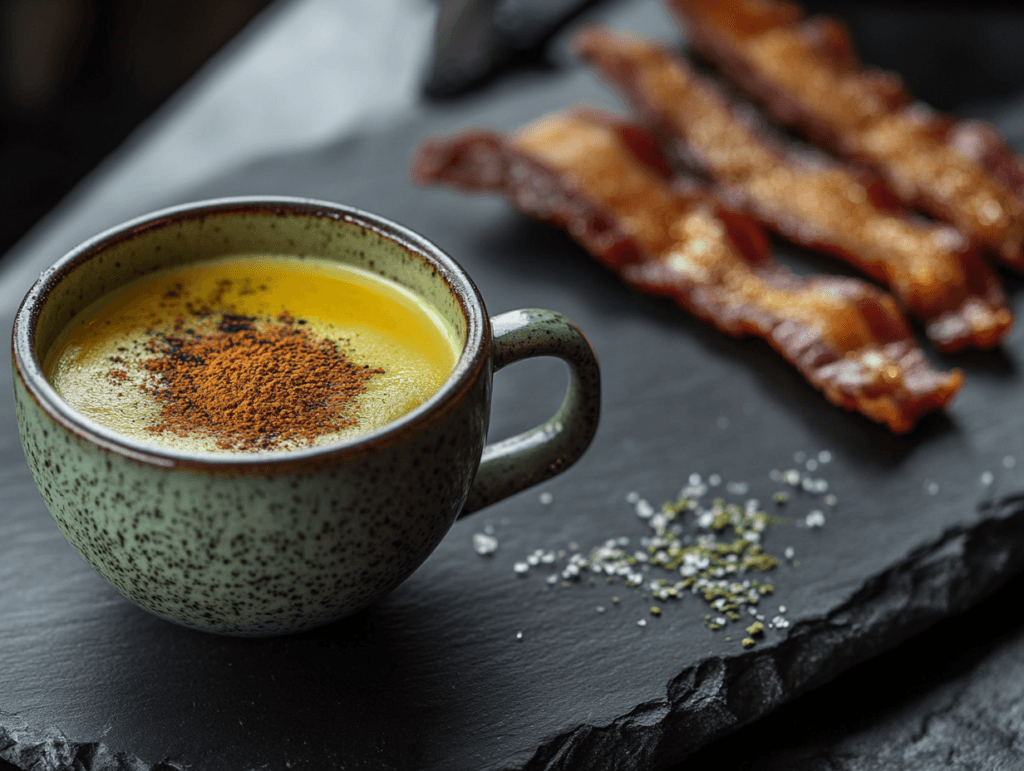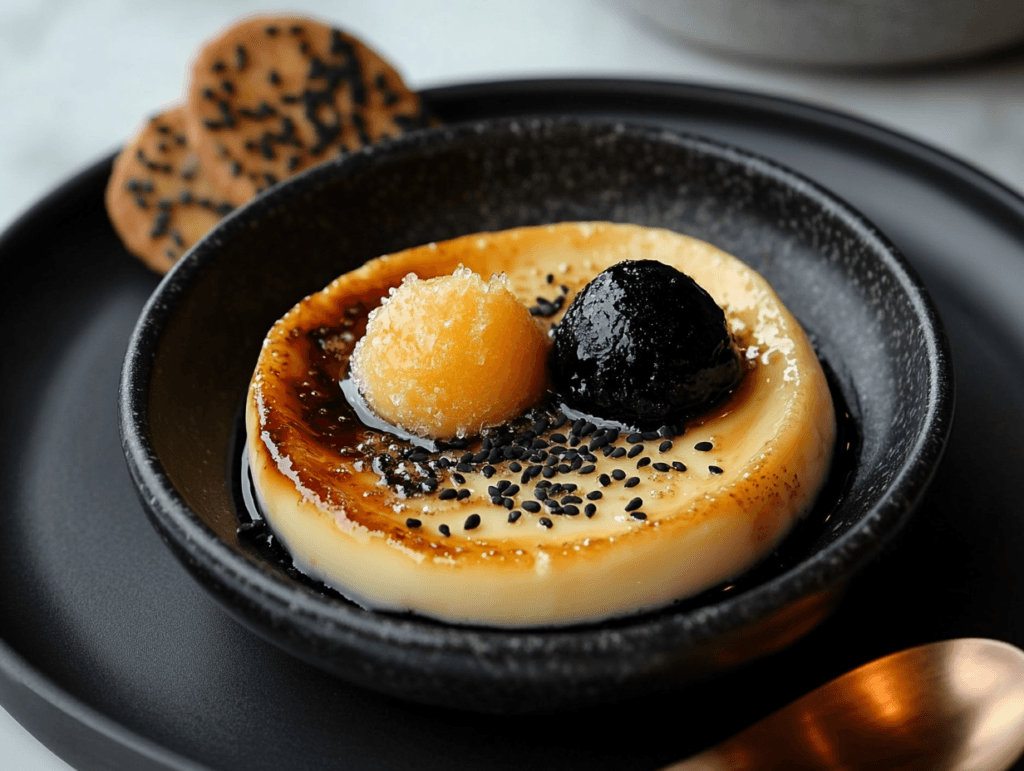Crème brûlée, a classic French dessert, is cherished worldwide for its silky custard base and crisp caramelized sugar topping. Its elegant simplicity makes it a versatile treat, ideal for pairing with a variety of accompaniments that enhance its flavor. Whether served at a formal gathering or as a comforting indulgence, the right pairing can transform your crème brûlée experience into a gourmet delight.
But what makes an ideal pairing? The key lies in balancing and complementing the dessert’s rich, creamy texture and caramelized notes. In this guide, we’ll explore the best pairings for crème brûlée, from timeless classics to modern innovations, helping you elevate this beloved dessert for any occasion.
Table of Contents
Why Pairings Matter
Pairings are more than just an afterthought when serving desserts like crème brûlée. They elevate the culinary experience by complementing, balancing, or even contrasting the rich and creamy notes of this classic dessert. Here’s why selecting the right pairing matters:
- Enhancing Flavors: Crème brûlée has a unique combination of creamy custard and caramelized sugar. A good pairing enhances these flavors without overwhelming them.
- Balancing Sweetness: Since crème brûlée is inherently sweet, the right accompaniment can add a touch of acidity, bitterness, or freshness to balance the dessert.
- Textural Contrast: Pairings can introduce a variety of textures, such as the crunch of biscotti or the effervescence of sparkling wine, adding depth to each bite.
- Creating Memorable Experiences: Whether it’s for a dinner party or a romantic evening, pairings turn a simple dessert into a sophisticated centerpiece.
Classic Pairings for Crème Brûlée
When it comes to crème brûlée, some pairings have stood the test of time. These classic options provide the perfect harmony of flavors and are widely loved by dessert enthusiasts.
Fine Wines and Champagnes
A fine wine or champagne is a quintessential pairing for crème brûlée. These beverages provide a contrast to the dessert’s sweetness while enhancing its caramel and vanilla notes.
- Sweet Dessert Wines: Sauternes from France or a rich Tokaji from Hungary work wonderfully. Their honeyed sweetness mirrors the brûlée’s caramelized topping.
- Sparkling Wines: A glass of Prosecco or Champagne adds a refreshing touch, cutting through the richness of the custard.
- Fortified Wines: Ports or sherries, such as Pedro Ximénez, bring nutty and raisin-like flavors that pair beautifully with crème brûlée.
For additional insights on enhancing crème brûlée’s flavors, explore our article on What Does Crème Brûlée Taste Like?.
Fresh Fruits and Berries
The freshness of fruits and berries offers a vibrant contrast to crème brûlée’s creamy texture and caramelized top.
- Tart Berries: Raspberries, blackberries, and cranberries provide a tangy counterpoint to the sweetness.
- Citrus Fruits: Orange or lemon slices bring a refreshing acidity that balances the custard’s richness.
- Tropical Fruits: Sliced mango, passion fruit, or pineapple can add an exotic flair to your crème brûlée.
Gourmet Coffees and Teas
Pairing crème brûlée with a warm beverage like coffee or tea creates a comforting and sophisticated combination.
- Espresso: The bitterness of espresso highlights the dessert’s creamy sweetness.
- Latte or Cappuccino: Creamy coffee options match the custard’s texture while complementing its vanilla notes.
- Herbal Teas: Chamomile or mint tea provides a light and refreshing pairing, especially after a rich meal.
Modern Pairing Trends

While classic pairings for crème brûlée have long been celebrated, modern food trends have introduced innovative options that push culinary boundaries. These creative pairings appeal to adventurous palates and elevate the dessert to new heights.
Artisanal Teas and Infusions
Specialty teas and herbal infusions have gained popularity as sophisticated companions for crème brûlée. These pairings bring unique flavor notes that complement or contrast the dessert.
- Jasmine Tea: The floral aroma of jasmine tea enhances the custard’s vanilla essence.
- Matcha Green Tea: Its earthy, slightly bitter profile cuts through the dessert’s sweetness and adds a modern flair.
- Chai Tea: The warm spices in chai, like cinnamon, cardamom, and ginger, pair harmoniously with the caramelized sugar.
Creative Liquor Pairings
Beyond traditional wines, modern pairings include innovative liquors and cocktails, offering unexpected yet delightful combinations.
- Whiskey or Bourbon: Aged spirits bring smoky and woody notes that complement the brûlée’s caramelized topping.
- Amaretto or Frangelico: These nutty liqueurs amplify the dessert’s sweetness with hints of almond or hazelnut.
- Cocktails: Try pairing with an Old Fashioned or a French 75 for a touch of elegance.
Savory Pairings
In recent years, savory elements have found their way onto dessert menus, creating a delightful contrast to sweet dishes like crème brûlée.
- Cheese Plates: Mild cheeses such as brie or mascarpone can serve as a creamy, savory counterbalance.
- Candied Bacon: The saltiness and crunch of candied bacon create an indulgent pairing with the custard.
- Herb Garnishes: A sprig of rosemary or thyme on top of the brûlée introduces a savory aroma that surprises and delights.
Regional Pairing Variations
Pairings for crème brûlée also vary depending on cultural influences and local ingredients. Exploring these regional pairings can bring exciting diversity to your dining experience.
French Pairings
As the birthplace of crème brûlée, France offers timeless accompaniments that showcase its culinary heritage.
- Madeleines: These buttery, soft cookies are a perfect side for the creamy custard.
- Calvados: This apple brandy from Normandy pairs well with the dessert’s caramel notes.
- Lavender: Incorporating lavender, whether in a tea or as a garnish, adds a Provencal touch.
Italian Influences
In Italy, crème brûlée pairings often feature bold flavors and rich textures.
- Espresso and Biscotti: The pairing of strong Italian coffee with almond biscotti creates a delightful contrast.
- Limoncello: This citrusy liqueur cuts through the custard’s richness with its tart, refreshing profile.
Asian-Inspired Pairings
Asian flavors and ingredients have influenced modern crème brûlée pairings, creating exciting combinations.
- Yuzu Sorbet: The tartness of yuzu complements the sweetness of crème brûlée beautifully.
- Black Sesame Cookies: These nutty cookies add a distinct flavor and crunch to the dessert.
- Matcha Latte: Pairing with a creamy matcha latte enhances the dessert with earthy and sweet undertones.
Best pairings for crème brûlée

Selecting the best pairing for crème brûlée depends on several factors, including its flavor profile, the occasion, and even the season. Here’s how to find the perfect match:
- Understanding Flavor Profiles: Crème brûlée offers a combination of creamy sweetness, caramelized depth, and vanilla richness. The best pairings either complement these flavors or provide a contrasting element to create balance.
- Matching Pairings to Occasions: A glass of fine wine enhances a formal dinner, while an espresso or herbal tea is perfect for a cozy gathering. For an elegant touch, pair with a sparkling wine or a sophisticated cocktail.
- Considering Seasonal Influences: Light, fruity accompaniments like berries and citrus are ideal for summer, while spiced teas and warm liqueurs bring comfort during colder months.
- Personalizing the Experience: Whether you prefer classic or creative pairings, experimenting with different flavors helps you discover your perfect combination. Offering multiple options to guests ensures everyone enjoys a well-balanced dessert experience.
Frequently Asked Questions About Crème Brûlée Pairings
Pairing crème brûlée with the right accompaniments can transform the dessert experience. Here, we address some common questions about pairing this classic treat.
What drink pairs best with crème brûlée?
Crème brûlée pairs well with a variety of beverages, depending on the flavor profile you’re seeking. Sweet dessert wines like Sauternes or fortified wines like Port are traditional choices. For a lighter option, sparkling wines such as Prosecco or Champagne offer a refreshing contrast. Non-alcoholic beverages like espresso or herbal teas, such as chamomile, also complement the dessert beautifully.
Can I pair crème brûlée with savory foods?
Yes! Savory pairings can create a unique balance. Consider mild cheeses like brie or mascarpone as a subtle accompaniment. Another creative choice is candied bacon, which provides a salty-sweet contrast to the custard’s richness. These combinations are perfect for those who enjoy complex flavor experiences.
What fruit goes best with crème brûlée?
Fruits that provide a tangy or acidic counterpoint are excellent choices. Raspberries, blackberries, and blueberries add a vibrant tartness. For a more exotic pairing, passion fruit or sliced mango offers a tropical twist. Citrus fruits, like orange slices or lemon zest, can also enhance the dessert’s creamy texture and caramelized top.
Is coffee a good pairing for crème brûlée?
Absolutely! Coffee is a classic pairing for crème brûlée, especially after a meal. The bitterness of an espresso balances the sweetness of the dessert, while the creaminess of a latte or cappuccino matches the custard’s smooth texture. For a more indulgent option, pair with a mocha to introduce a hint of chocolate.
Are there regional pairings for crème brûlée?
Yes! Crème brûlée pairs with different accompaniments based on regional influences:
- French Pairings: Pair with Calvados (apple brandy) or lavender-infused tea for a Provencal touch.
- Italian Pairings: Espresso or Limoncello adds a bold or citrusy complement.
- Asian Pairings: Yuzu sorbet or black sesame cookies provide unique flavors inspired by Asian cuisine.
Conclusion
Crème brûlée is a timeless dessert that delights with its creamy custard base and caramelized sugar topping. While the dessert is exquisite on its own, the right pairing can elevate the experience to new culinary heights. Whether you lean toward classic accompaniments like fine wines and fresh berries, or explore modern trends such as savory pairings or artisanal teas, there’s no shortage of ways to enhance this beloved dessert.
The best pairing depends on personal preference and the occasion—whether it’s a sophisticated dinner party or a relaxing evening at home. Consider the season, the flavor balance, and your guests’ tastes when selecting pairings. Experiment, explore, and enjoy the perfect combination that transforms crème brûlée into an unforgettable treat.

